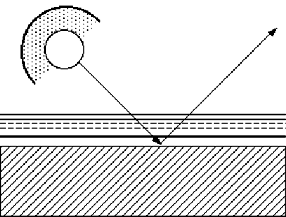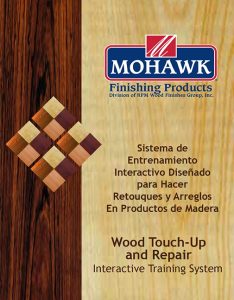Getting the most from your Lacquer Finishes
When & Why To Use
Flash-Off™ Control Solvent & Lacquer Blush Retarder
| Lacquer Retarder helps avoid Blushing caused by Cold Humid Wet Weather Lacquer retarder is used to help eliminate “blushing”, the white foggy look caused by HIGH humidity or rainy and cool/cold weather. This blush sometimes is only observed in areas where the build of the coating is thicker such as bull-nosed edges. Blush retarder keeps the finish wet longer allowing the trapped moisture to escape the coating. Another advantage is an even flow of the lacquer. To Eliminate Orange Peel & Over-Spray, Use Flash-Off Control Solvent – The Hot Weather Additive. Generally, Blush Retarder Is Overused. In cases of orange peel or overspray, Flash-Off™ Control Solvent is the best choice to solve the problem.Flash-Off™ Control is used to improve the flow of lacquers and lacquer sealers without slowing the overall drying time. The addition of a few ounces of Flash-Off™ Solvent per gallon of lacquer will solve orange peel and overspray roughness. Flash-Off™ Control Solvent will improve flow and yield overall film smoothness. |
Flash-Off Control Solvent Use: Add 3 to 5 ounces, Flash-OFF per gallon, to Mohawk air dry nitrocellulose, pre-catalyzed and post-catalyzed lacquer coatings. More Flash-Off™ may be added, up to10% by volume if needed, but that will increase dry time. DO NOT add Flash Off Control to water base lacquers or conversion varnishes. (NOT for use with Shellac) About Lacquer Thinners: Avoid Overuse of Lacquer Thinner Most lacquers come ready to spray. This includes Pre & Post Catalyzed, Air Dry, Instrument & Piano lacquers. If the spray gun is set properly, add Lacquer Thinner only as absolutely necessary to achieve a proper spray pattern. Adding more thinner does not help the flow-out or drying time. Control lacquer flow-out with Flash-Off Control Solvent. If blushing is the problem, use a small percentage of blush retarder. Lacquer solids generally are somewhere between 20% – 25% solids and formulated to be, Air Quality VOC’s (volatile organic compounds / smog pre-cursers), compliant as labeled. Adding thinner will result in a non-compliant coating. Excess thinner or reducer results in a thinner coat of finish, thus requiring additional coats to achieve the required appearance and enough thickness to provide a protective coating. |



